CES 2019: Dell Alienware Area-51m DTR Laptop with Core i9-9900K & GeForce RTX
by Anton Shilov on January 18, 2019 11:00 AM EST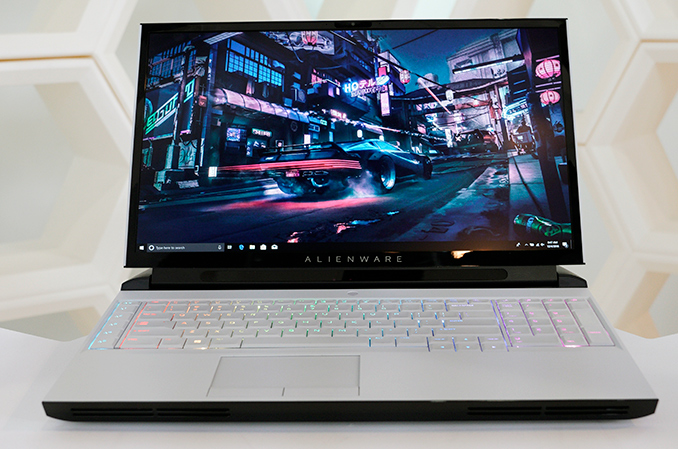
In the recent years a number of PC makers have introduced desktop replacement-class notebooks with processors originally developed for desktops. Meanwhile, large OEMs tend to be more conservative and kept using mobile CPUs for their high-end laptops. However, there is a first time for everything and this month Dell’s Alienware announced its first DTR notebook featuring Intel’s desktop six-core and eight-core processors. In fact, the Area-51m was specifically designed to offer high-end performance with few (if any) compromises.
Being a DTR machine, the Alienware Area-51m does away with any notion of "small." This starts with the screen, which is based around a 17.3-inch IPS display panel featuring a Full-HD resolution, 300 nits max brightness, as well as a 60 Hz or 144 Hz refresh rates. Dell is even offering models with G-Sync variable refresh functionality, depending on the exact SKU (see the table below for details), and higher-end versions of the Area-51m displays also feature Tobii eye-tracking. Past that, since many DTRs are used with external monitors, Dell did not necessarily need to equip its flagship gaming notebook with an Ultra HD LCD, especially given the challenges in driving that kind of a resolution in many games.
As noted, Dell’s Alienware Area-51m R1 is based on Intel’s LGA1151 Core i7/i9 processor with six or eight cores as well as Intel’s Z390 chipset. On the graphics hardware side of things, the system is equipped with NVIDIA’s GeForce RTX 2060/2070/2080 graphics adapters in Dell’s proprietary form-factor, so while the graphics adapter can technically be upgraded, right now at least it can only be switched by the manufacturer itself.
To cool down the CPU and GPU, Dell uses its proprietary Cryo-Tech v2.0 cooling systems comprising of two fans featuring two intake and two exhausts as well as eight thick copper-composite heat pipes (four for the CPU and four for the GPU).
The system has four DDR4 SO-DIMM slots supporting up to 64 GB of DDR4-2400 memory. As for storage, the Area-51m can work with up to three M.2 PCIe 3.0 x4 drives as well as a 2.5-inch HDD/SSD. So, depending on the exact model, the notebook can use one, two, or three storage devices.
As for connectivity, the Alienware Area-51m offers similar options as other notebooks from the brand. The laptop is equipped with a Killer Wireless 1550 2x2 802.11ac and Bluetooth 5.0 controller, a Realtek-enabled 2.5 GbE jack, one Thunderbolt 3-enabled USB-C port, three USB 3.0 Type-A ports, two display outputs (mini DisplayPort 1.3, HDMI 2.0), 3.5-mm audio jacks, and an Alienware Graphics Amplifier port for proprietary external graphics solutions. The notebook also features an RGB-backlit keyboard with a numpad and a 2.2 mm travel distance, a 720p webcam, stereo speakers, and a microphone array.
Traditionally for Alienware laptops, they come in a very stylized chassis featuring a futuristic design. The Area-51m will come in Lunar Light as well as Dark Side of the Moon colors schemes, with both enclosures outfitted with an AlienFX customizable RGB lighting (power button, alien head, infinite loop in the back).
Being a DTR laptop, the Area-51m is not intended be lightweight and portable, so Dell comes in heavy at 3.87 kilograms (8.54 pounds), which despite the weight is actually lighter than some other machines of this class. The laptop is also up to 42 mm thick, considerably thinner than some of its rivals. And despite the (relatively) thin profile, the Area-51m still packs a 90 Wh battery; though Dell isn't specifying just how long the laptop will actually last on a charge. Also of note: due to the sheer power requirements of the high-end laptop, Dell is actually splitting up its power consumption over two power adapters. Modest models will come with two 180 W PSUs, whereas high-end configurations will come with a 180 W PSU and a 330 W PSU.
| General Specifications of Dell's Alienware Area-51m | |||||
| Area-51m 1080p 60 Hz |
Area-51m 1080p 60 Hz G-Sync |
Area-51m 1080p 144 Hz Tobii |
Area-51m 1080p 144 Hz G-Sync + Tobii |
||
| Display | Type | IPS | |||
| Resolution | 1920×1080 | ||||
| Brightness | 300 cd/m² | ||||
| Color Gamut | 72% NTSC (?) | ||||
| Refresh Rate | 60 Hz | 144 Hz | |||
| CPU | Intel Core i7-8700 - 6C/12T, 3.2 - 3.6 GHz, 12 MB cache, 65 W Intel Core i7-9700K - 8C/8T, 3.6 - 4.9 GHz, 12 MB cache, 95 W Intel Core i9-9900K - 8C/16T, 3.6 - 5.0 GHz, 16 MB cache, 95 W |
||||
| Graphics | Integrated | UHD Graphics 620 (24 EUs) | |||
| Discrete | NVIDIA GeForce RTX 2060 with 6 GB GDDR6 NVIDIA GeForce RTX 2070 with 8 GB GDDR6 NVIDIA GeForce RTX 2080 with 8 GB GDDR6 |
||||
| RAM | 8 GB single-channel DDR4-2400 16 GB dual-channel DDR4-2400 32 GB dual-channel DDR4-2400 64 GB dual-channel DDR4-2400 |
||||
| Storage | Single Drive | 256 GB PCIe M.2 SSD 512 GB PCIe M.2 SSD 1 TB PCIe M.2 SSD 1 TB HDD with 8 GB NAND cache |
|||
| Dual Drive | 128 GB PCIe M.2 SSD + 1 TB (+8 GB SSHD) Hybrid Drive 256 GB PCIe M.2 SSD + 1 TB (+8 GB SSHD) Hybrid Drive 512 GB PCIe M.2 SSD + 1 TB (+8 GB SSHD) Hybrid Drive 1 TB PCIe M.2 SSD + 1 TB (+8 GB SSHD) Hybrid Drive 116 GB Intel Optane SSD + 1 TB (+8 GB SSHD) Hybrid Drive 256 GB PCIe M.2 SSD + 256 GB PCIe M.2 SSD 512 GB PCIe M.2 SSD + 512 GB PCIe M.2 SSD 116 GB Intel Optane SSD + 116 GB Intel Optane SSD |
||||
| Triple Drive | 256 GB PCIe M.2 SSD + 256 GB PCIe M.2 SSD + 1 TB Hybrid Drive 512 GB PCIe M.2 SSD + 512 GB PCIe M.2 SSD + 1 TB Hybrid Drive 1 TB PCIe M.2 SSD + 1 TB PCIe M.2 SSD + 1 TB Hybrid Drive 116 GB Intel Optane SSD + 116 GB Intel Optane SSD + 1 TB Hybrid Drive |
||||
| Wi-Fi + Bluetooth | Killer Wireless 1550 2x2 802.11ac and Bluetooth 5.0 | ||||
| Thunderbolt | 1 × USB Type-C TB3 port | ||||
| USB | 3 × USB 3.1 Gen 1 Type-A | ||||
| Display Outputs | 1 × Mini DisplayPort 1.4 1 × HDMI 2.0 |
||||
| GbE | Realtek 2.5 Gbps Ethernet controller | ||||
| Webcam | 720p webcam | ||||
| Other I/O | Microphone, stereo speakers, audio jacks, trackpad, Alienware Graphics Amplifier port, etc. | ||||
| Battery | 90 Wh | ||||
| PSU | 180 W + 180 W 180 W + 240 W 180 W + 330 W |
||||
| Dimensions | Thickness | 27.65 mm | 1.09 inch ~ 42 mm | 1.7 inch | |||
| Width | 410 mm | 16.1 inch | ||||
| Depth | 402.6 mm | 15.85 inch | ||||
| Weight (average) | 3.87 kilograms | 8.54 lbs | ||||
| Operating System | Windows 10 or Windows 10 Pro | ||||
The Alienware Area-51m DTR laptops are now available for pre-order and will ship later this month. The standard configurations cost from $2,520 to $4,220, but builds with all the bells and whistles will cost well beyond $5,000.
Related Reading:
- Dell at CES 2019: Alienware m17 Packs Core i9, GeForce RTX into 17.3-Inch Chassis
- Dell at CES 2019: Alienware m15 Gets Core i9, GeForce RTX, & 4K HDR400 Display Upgrade
- Alienware Installs NVIDIA’s GeForce RTX Cards In Aurora and Area-51 Desktops
- Alienware Area-51 Threadripper Edition Announced at E3, Available for Order July 27
- Dell at CES 2019: Alienware 55-Inch 4K 120 Hz OLED Gaming Monitor Showcased
Source: Dell



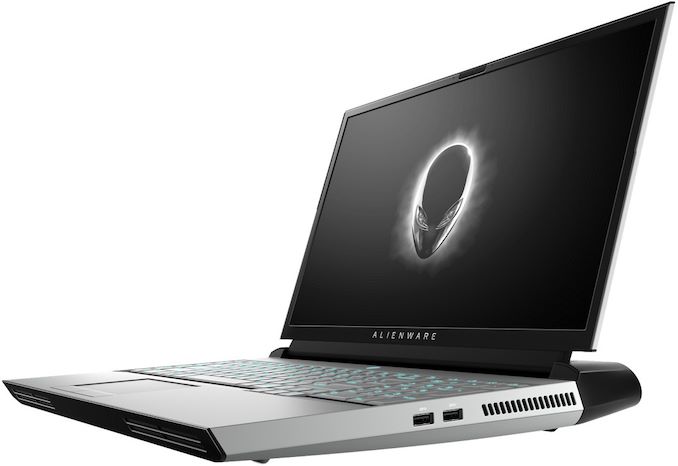
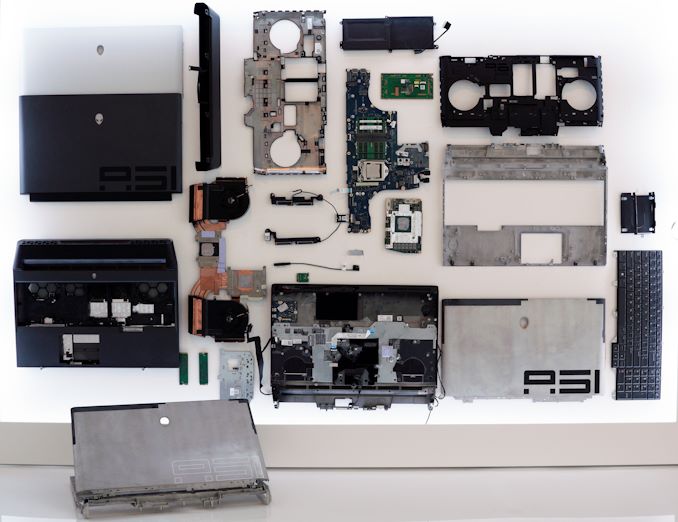
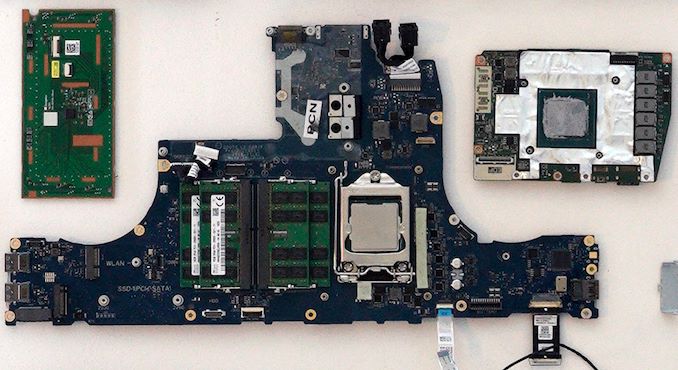
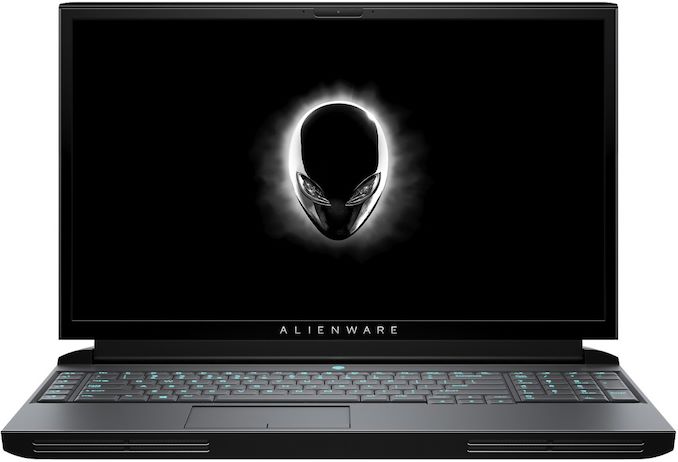
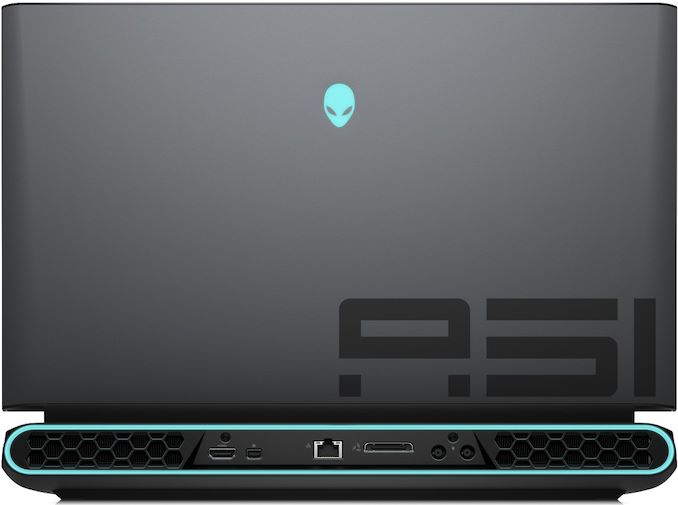






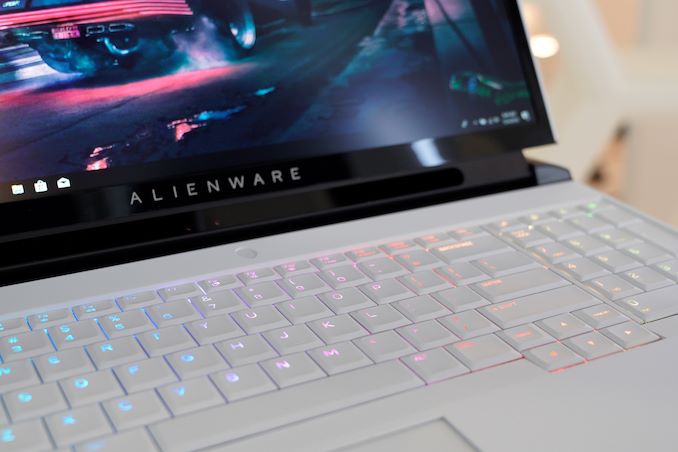








33 Comments
View All Comments
PeachNCream - Saturday, January 19, 2019 - link
I don't think it is an actual legal limit. Airlines in the US (not sure about the rest of the world) mandate no larger than a 99WHr battery. I presume that is to prevent someone from taking a large explosive device and cramming it into a battery, but I haven't done the research. At any rate, that limitation is why OEMs shy away from using higher capacities.Flunk - Tuesday, January 22, 2019 - link
FAA regulations don't allow Li-Ion batteries with capacities of over 100WHr in the cabin of an airliner without specific airline permission. The limit is actually 160WHr.https://www.faa.gov/about/office_org/headquarters_...
HStewart - Friday, January 18, 2019 - link
Well I gotten used to 2in1 nature - it has some uses - especially if just scanning internet - or watching a video. I find especially the 15 2in1 - how the power of it can be pack in thin case - it is 1/2 as thin as Lenovo Y50. Looking back - I think getting 4k on it - is a waste - I am getting old and hard to see on 4k and it does use of battery - but most of time I use it connected to TB docking station connected to LG 38U88 Ultrawide. the XPS 13 2in1 is great for office like stuff - word processing and internet and such - super light and small as MacBook Air 11 in - yes it has a lower power Y processor but for what I use for it is perfect. While my XPS 15 2in1 is a perfect desktop replacement - only thing I wish it had was NVidia based GPU - just more compatible for high end graphics work2nd half or end of year should be really exiting, especially with Sunny Cove processors - I expecting the equilvent performance of XPS 15 2in1 in XPS 13 2in1 with twice the batter life. But what could be really exiting is Lakefield - I could see it same performance as current XPS 13 2in1 but in same market as Surface Go. Possible Dell will use in lower cost version of XPS 13 2in1.
Opencg - Friday, January 18, 2019 - link
Actually that killer wifi is the current best as it offers within a margin of error of the best latency and better reception than any other card currently. Most killers suck but the 1550 is great when you dont use the killer software just the drivers.Also this computer isn't for you its for people who want a desktop replacement. Go back to whatever borring life you came from.
Only bad thing I can say about it (other than the fact that it's a dell and they have a totally tarnished reputation for laptops in this class) is the gpu. I would not bet on getting a fairly priced replacement or upgrade from that company ever. Other that that they actually did alot of things better than pervious generations. Socketed cpu. Enough power supply. 4 mounting screws for cpu and gpu heatsink (3 on previous generation made a 10-20c heat rise).
HStewart - Friday, January 18, 2019 - link
I disagree with a lot this1. As desktop replacement - most people don't need more than 4 or 6 cores. Also it has both a TB3 port and Alienware Graphics adapter - unless you really need the cores, then it virtually the same
2. Dell is a great company - top of class quality - I still have Dell Inspiron 7000 with Pentium II processor - never became a brick like my HP.
Opencg - Friday, January 18, 2019 - link
Well point 1 has nothing to do with what I said and point 2 is just frankly wrong. Dell is a horrible company with a completely tarnished reputaion around the alienware desktop replacement lines. Hell the 4th gen laptops would actually throttle to 800mhz whenever a game managed to use significant cpu and gpu percents. Battlefield, overwatch, ect. 800mhz. 100% of the units did this and the tech support was trained to tell people it was normal. They actually shiped these witb underpowered psus as a sort of ghetto coverup. The only ones who actually got what they paid for are people who only played games that loaded cpu or gpu exclusively. R4 laptops had a huge percent (well over half) that had 2 cores between 10c and 25c over the other 2. Again this was just considered ok by dell. These are just a few of the issues with the alienware lines. Other lines had similar issues. Screens that had a vertical line pattern every other pixel. This was explained as a "wattermark" and intentional. What the fuck do you even say to that? The fact that you would go out of your way to say this company has a good reputation shows how much you really know. Not to mention you assume that all consumers would follow your idiotic beliefe about 4 cores when the 9900k and 9700k are still the king in low core games. Please never post again unless you learn how to think.PeachNCream - Saturday, January 19, 2019 - link
I agree that Dell's non-business notebooks have had some quality control problems at various times. In fact, their business systems occasionally miss as well, but that isn't much different than the hit and miss rate of most other companies. Every OEM pushes out the occasional dud. I've had the displeasure of owning awful HPs, crappy Compaqs (pre- & post-HP merger), a garbage Lenovo, a self-destructing Acer, a Texas Instruments release-the-magic-smoke bomb, a bloated-OS and slow-as-crap NEC, a Fujitsu with one of the worst passive matrix LCDs the 1990s had to offer, and so forth. However, at the same time, I've had good laptops and desktops from many of those same companies. Most of the systems I've purchased, even those that had their quirks, did what they were supposed to do in their own quirky, sometimes frustrating way. In the end, they're just computers and their functionality or lack thereof shouldn't be a dominant factor in your life. There are more important things to worry about.Opencg - Saturday, January 19, 2019 - link
Its an issue for the WORLD when a company has a policy of shipping broken products or products with qc issues so bad that a majority of people will return them that cost alot of money to alot of people AND waste time that is important to gamers to return or refund. Or in most cases people realize why thier system is not working properly too late and then they are dealing with a company that has trained its premium support to explain why 800mhz on a i7 laptop that cost at least 2k is considered normal. Is this ok for the world? Who exactly are dell helping besides themselves in these cases. Im sorry I like video games I program and play them and having at least a company that TRIES to provide a working system is a big deal to me. And its the same to many other people throughout the world. Sorry if it offends you that this is the case.PeachNCream - Saturday, January 19, 2019 - link
There are no companies that enforce a policy of shipping broken products. Such a company would not survive as the corporation's reputation would suffer, customers would find alternatives, and governments in some nations would get involved. Although one specific model of Alienware model did have insufficient cooling (something a number of Reddit users solved by disabling CPU turbo - hurts performance, but not significantly since most games were/are GPU-limited and applying new thermal compound) that doesn't imply a systemic problem with the manufacturer. Sure they should have done better and yes, they did a disservice to their customers by designing a marginal cooling solution that could not handle higher ambient air temps or the inevitable ingestion of an unhealthy amount of dust, but as I said before, those are the occasional dud as opposed to a significantly large statistical sample of results across a long span of time from the aforementioned company.Opencg - Tuesday, January 22, 2019 - link
Well it has to be intentional. Im sure the qc and engineers knew about thses issues. 800mhz is not ok no matter what you say it's just not. Screens with lines in them by design are just stupid. Exceptionally poor cooling even for laptops; I mean I get that changing a motherboard designed to work with 3 screws in retrospect is not easy. And dell does not make these themselves. But from a consumer standpoint its pretty damn awful borderline trash. Adding 20c to already thermally limited laptops and selling them as high end products from 2-4k. I get that the world is fucked up and consumers get the shaft sometimes but its just a long pattern of this that dell has to break from. Its not ok when it happens at such high rates. I mean you are LUCKY if you got an alienware laptop with no major issues out the box for the past 5+ years. It really shows on the 4th gen where intel fucked up as well and released thermally sensitive cpus and chipsets. Combine that with a shit tier power system and below minimum spec cooling and you get something that should be half the price considering what it can actually do. So I mean go ahead and justify it how ever you want. You are just arguing against things that Im sure you would be very depressed about if you bought any of these systems. And there are plenty of manufactureres that are alot more consistent and INTENTIONALLY design their systems with adequate power and cooling.